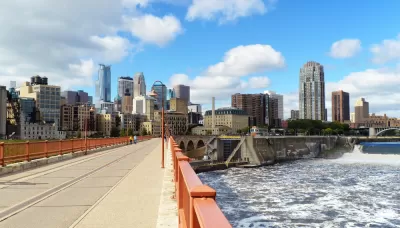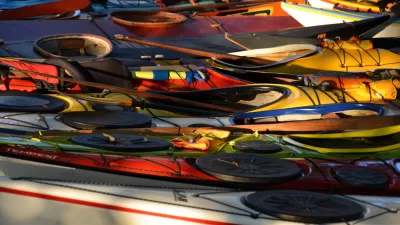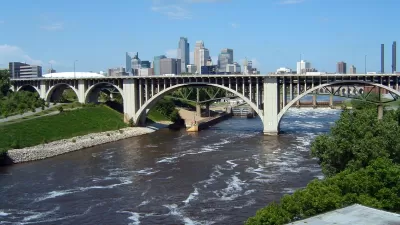Details of a proposal to create a national park at one of the Twin Cities' region most popular destinations: the lock and dam at the Upper St. Anthony Falls, on the Mississippi River where it flows through Minneapolis.

Peter Callaghan reports on a unique idea from the Twin Cities: a national park in Downtown Minneapolis.
"The dream centers on one of the most-visited pieces of land in the region, around the lock and dam at the Upper St. Anthony Falls that sits below the Stone Arch Bridge. And the idea is to create a park experience to tell the story of the Native Americans who preceded the region's white settlers as well as the industries that tapped the power of the river to build the city," according to Callaghan.
Callaghan begins the article by noting the challenges and long timeline facing the idea, but also that a coalition of local interests is working hard to bring it to fruition. John Anfinson, the superintendent of the Mississippi National River & Recreation Area, is quoted in the article saying, "[f]ew places on the entire Mississippi can match its national and international significance…"
Meanwhile, the lock sits mostly dormant, after a 2014 decision by Congress to close the lock to watercraft navigation "as a way to halt the progress of invasive carp." Also, the U.S. Army Corps of Engineers is currently seeking funding for a "disposition study" to explore the question of whether the federal government should still own and operate the lock. Finally, one of the largest adversaries to the park proposal is a license held by Minneapolis-based Crown Hydro to build a small hydroelectric project at the lock. Representatives of the company are quoted in the article, however, claiming that a hydroelectric problem shouldn't be an obstacle to the park proposal.

Planetizen Federal Action Tracker
A weekly monitor of how Trump’s orders and actions are impacting planners and planning in America.

Map: Where Senate Republicans Want to Sell Your Public Lands
For public land advocates, the Senate Republicans’ proposal to sell millions of acres of public land in the West is “the biggest fight of their careers.”

Restaurant Patios Were a Pandemic Win — Why Were They so Hard to Keep?
Social distancing requirements and changes in travel patterns prompted cities to pilot new uses for street and sidewalk space. Then it got complicated.

Platform Pilsner: Vancouver Transit Agency Releases... a Beer?
TransLink will receive a portion of every sale of the four-pack.

Toronto Weighs Cheaper Transit, Parking Hikes for Major Events
Special event rates would take effect during large festivals, sports games and concerts to ‘discourage driving, manage congestion and free up space for transit.”

Berlin to Consider Car-Free Zone Larger Than Manhattan
The area bound by the 22-mile Ringbahn would still allow 12 uses of a private automobile per year per person, and several other exemptions.
Urban Design for Planners 1: Software Tools
This six-course series explores essential urban design concepts using open source software and equips planners with the tools they need to participate fully in the urban design process.
Planning for Universal Design
Learn the tools for implementing Universal Design in planning regulations.
Heyer Gruel & Associates PA
JM Goldson LLC
Custer County Colorado
City of Camden Redevelopment Agency
City of Astoria
Transportation Research & Education Center (TREC) at Portland State University
Camden Redevelopment Agency
City of Claremont
Municipality of Princeton (NJ)




























